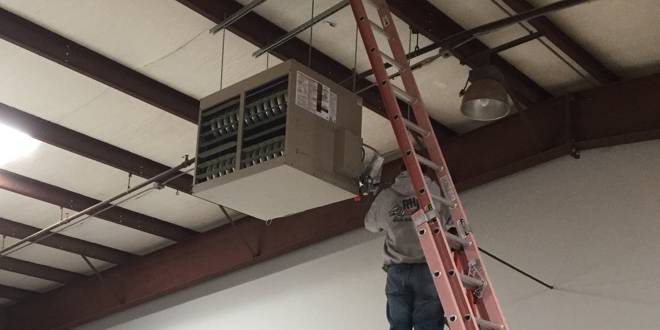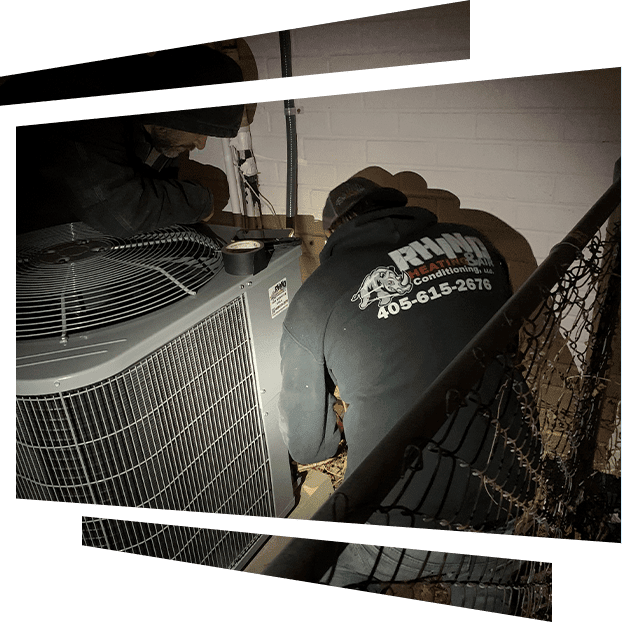
In the heart of Oklahoma City, where buildings stand tall and vibrant, the air handler unit plays a vital role in maintaining indoor comfort. Discover why proper handling of these units is crucial for the health and efficiency of your building’s HVAC system.
What is an Air Handler Unit?
Air handler units (AHUs) are essential components of HVAC systems, acting as the lungs of a building by circulating and conditioning air. Understanding the function and components of an AHU is crucial for maintaining a comfortable and healthy indoor environment.
Function
Circulation: AHUs circulate air throughout a building, ensuring a consistent flow of conditioned air to different areas.
Conditioning: AHUs are responsible for conditioning the air, which includes heating, cooling, humidifying, and dehumidifying to maintain desired temperature and humidity levels.
Filtration: AHUs contain filters that capture dust, pollen, and other particles, improving indoor air quality.
Components
Blower: The blower is responsible for moving air through the AHU and into the building’s ductwork.
Heating or Cooling Elements: AHUs may contain heating elements, such as electric coils or hot water coils, and cooling elements, such as refrigerant coils, to condition the air.
Filters: Filters trap airborne particles, preventing them from entering the building and improving indoor air quality.
Dampers: Dampers control the flow of air within the AHU, directing it to different areas of the building as needed.
Controls: Controls regulate the operation of the AHU, including temperature, humidity, and air flow, ensuring optimal performance and efficiency.
In summary, air handler units are essential for maintaining a comfortable and healthy indoor environment. By understanding their function and components, building owners and managers can ensure that their AHUs are properly maintained and operated, contributing to overall building efficiency and occupant comfort.
Importance of Proper Handling
Proper handling and maintenance of air handler units (AHUs) are crucial for several reasons, including efficiency, indoor air quality, comfort, and system lifespan. Here’s a closer look at each of these aspects:
Efficiency:
Optimal Performance: Proper maintenance ensures that AHUs operate at their peak performance, reducing energy consumption and operating costs.
Energy Savings: Well-maintained AHUs use less energy to achieve the desired temperature, leading to lower utility bills and reduced environmental impact.
Preventive Maintenance: Regular maintenance helps identify and address potential issues before they escalate, preventing costly repairs and downtime.
Indoor Air Quality:
Removal of Contaminants: Clean AHUs remove dust, allergens, and other contaminants from the air, improving indoor air quality and creating a healthier environment for occupants.
Prevention of Mold Growth: Proper maintenance helps prevent mold growth in AHUs, which can negatively impact indoor air quality and pose health risks.
Comfort:
Consistent Temperatures: Well-handled AHUs provide consistent and comfortable indoor temperatures throughout the building, enhancing occupant comfort and productivity.
Humidity Control: Properly maintained AHUs help control indoor humidity levels, creating a more comfortable environment and reducing the risk of mold and mildew growth.
System Lifespan:
Extended Lifespan: Regular maintenance and proper handling can extend the lifespan of AHUs, reducing the need for premature replacements and saving money in the long run.
Protecting Your Investment: AHUs are a significant investment, and proper maintenance helps protect this investment by ensuring that the system operates efficiently and reliably for years to come.
Troubleshooting Guide: Common Issues with AHUs
Air handler units (AHUs) are critical components of HVAC systems, but they can experience issues that affect their performance. Here are some common problems and troubleshooting steps:
Dirty Filters
Issue: Dirty filters can restrict airflow, reducing efficiency and causing strain on the HVAC system.
Troubleshooting: Check the filters regularly and replace them if they are dirty. Use high-quality filters and follow the manufacturer’s recommendations for replacement intervals.
Blocked Coils
Issue: Blocked coils can impede heat transfer, reducing the system’s cooling or heating capacity.
Troubleshooting: Inspect the coils for dirt, debris, or ice buildup. Clean the coils using a soft brush or vacuum cleaner. Ensure that there are no obstructions blocking airflow to the coils.
Leaky Ducts
Issue: Leaky ducts can result in air loss, reducing system efficiency and increasing energy costs.
Troubleshooting: Inspect the ductwork for any visible signs of leaks, such as gaps, cracks, or disconnected joints. Seal the leaks using duct sealant or mastic tape to improve efficiency.
Worn Belts and Bearings
Issue: Worn belts and bearings can cause noise, vibration, and premature equipment failure.
Troubleshooting: Inspect the belts for signs of wear, such as fraying or cracking. Replace any worn belts and tighten any loose belts. Lubricate bearings according to the manufacturer’s recommendations.
Step-by-Step Maintenance Tips for Air Handlers
Proper maintenance of air handler units (AHUs) is essential for ensuring efficient operation and prolonging the lifespan of the system. Here’s a step-by-step guide to maintaining AHUs:
Regular Inspections:
Frequency: Schedule quarterly inspections by a qualified technician to check for any issues or signs of wear.
Checklist: Inspect the AHU components, including filters, coils, belts, bearings, and ductwork, for any damage or deterioration.
Action: Address any issues promptly to prevent further damage and maintain optimal performance.
Filter Replacement:
Frequency: Replace filters every 1-3 months, or more frequently if the building is located in a dusty environment or has high occupancy.
Procedure: Turn off the AHU, remove the old filter, and replace it with a new one of the same size and type.
Importance: Clean filters ensure optimal airflow and indoor air quality, reducing strain on the system and energy consumption.
Coil Cleaning:
Frequency: Clean coils at least once a year, or more frequently if they are visibly dirty or if the system is used heavily.
Procedure: Turn off the AHU, remove any debris or obstructions from the coils, and clean them using a soft brush or vacuum cleaner.
Benefits: Clean coils ensure efficient heat transfer, improving the overall efficiency of the system.
Duct Sealing:
Frequency: Seal ducts as needed, especially if there are visible leaks or if the ductwork is old or damaged.
Procedure: Use duct sealant or mastic tape to seal any gaps, cracks, or joints in the ductwork.
Benefits: Sealing ducts prevents air leaks, improving system efficiency and reducing energy costs.
Belt and Bearing Maintenance:
Frequency: Check belts and bearings quarterly for signs of wear, such as fraying or cracking.
Procedure: Replace worn belts and tighten or lubricate bearings as needed, following the manufacturer’s recommendations.
Importance: Proper maintenance of belts and bearings prevents equipment failure and ensures smooth operation of the AHU.
Trust Rhino Heating & Air Conditioning for Your AHU Needs
At Rhino Heating & Air Conditioning, we understand the importance of proper handling and maintenance of air handler units. Our experienced technicians can provide expert maintenance and repair services to keep your AHU operating efficiently. Contact us today to schedule a service and ensure your building’s HVAC system is in top condition. We also offer heating and cooling installation. Breathe easy with Rhino Heating & Air Conditioning! 🌬️


